October 29, 2023
People know me as a Hodophile. If you browse my feed, you'll see pieces of evidence. Feel free to read them if you want ☺️ or visit my Pinmapple map. I love adventures, interesting stories, historical facts, fairs, and artsy events.
The Weekend Engagement 177 topic asked:
Art galleries, museums, cultural centres, historical sites, fairs, and markets: Share your weekend experiences at one or more of these places. Remember that all photos must be your own.
I think I've been to all of them, and my experiences were all shared in my previous posts. But today, I'll share with you the recent travel experience I had in a museum—not in Hong Kong, but in the Philippines this time.
As mentioned in one of my posts, we visited Manila for some paperwork, and that includes visiting Camp Aguinaldo for some important matters. I remember browsing the internet to find information about offices in the camp when I stumbled upon the name of a museum. That day, I promised myself I would visit it before leaving the camp.
During our last stay at Camp Aguinaldo, I located the AFP Museum, and we found it easily. It was raining hard that day, and I thought I couldn't visit it anymore. Moreover, we were in a hurry as we had to leave the camp while the shuttle was in service. Otherwise, we would walk to get our things at the transient house and then back to the exit, which isn't favorable for my mother.
When the rain receded a bit, we quickly visited the outer part of the museum. Yep! Just the outer part since we were in a hurry that day and it might rain heavily again. I wanted to visit the inside part because I know it's more interesting to learn history, but my family refused, so I was a bit sad. Jane doesn't like missing a single spot in the places she is exploring. Perhaps they don't know about it, but I understand our situation.
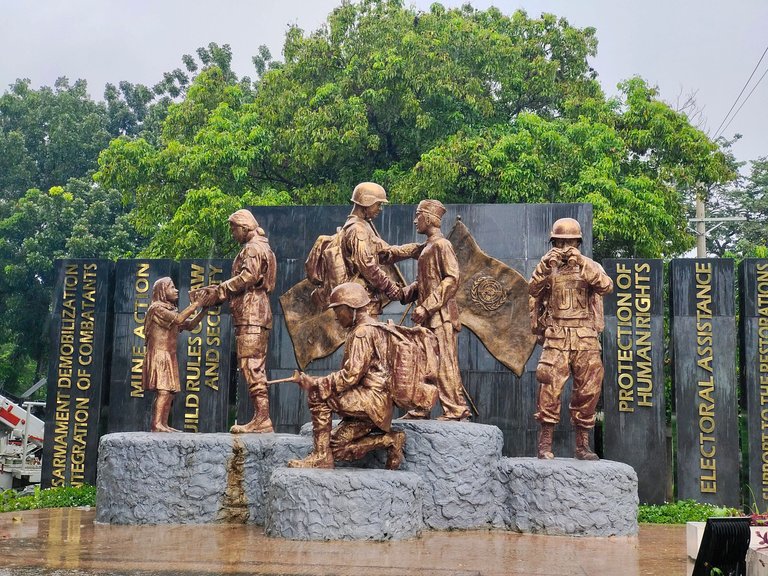
AFP Museum or Armed Forces of the Philippines Museum is, from the name itself, a military museum established in 1996. Near the entrance to the museum are these bronze statues of the UN military group, depicting peace and humanity. It reminded me of my late father, since he became a member of the United Nations representing the Philippine military group sent to East Timor and Australia back in the day. Exploring the museum is somewhat like imagining how his life has been as a protector of the people and the state.
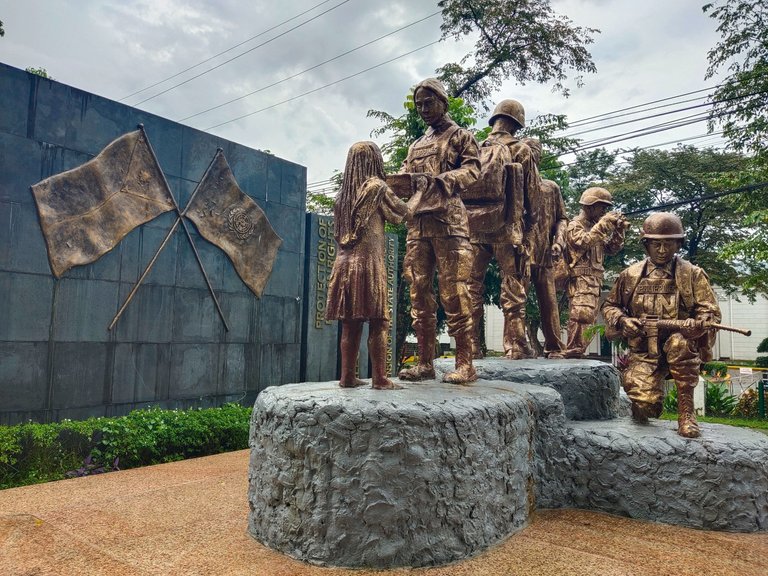
The museum's garden is set up like a battlefield, with a variety of military vehicles, and weaponry on exhibit. It was my first time seeing military vehicles and weapons up close, even though my late father served in the military for 39 amazing years. I was both proud and astonished.
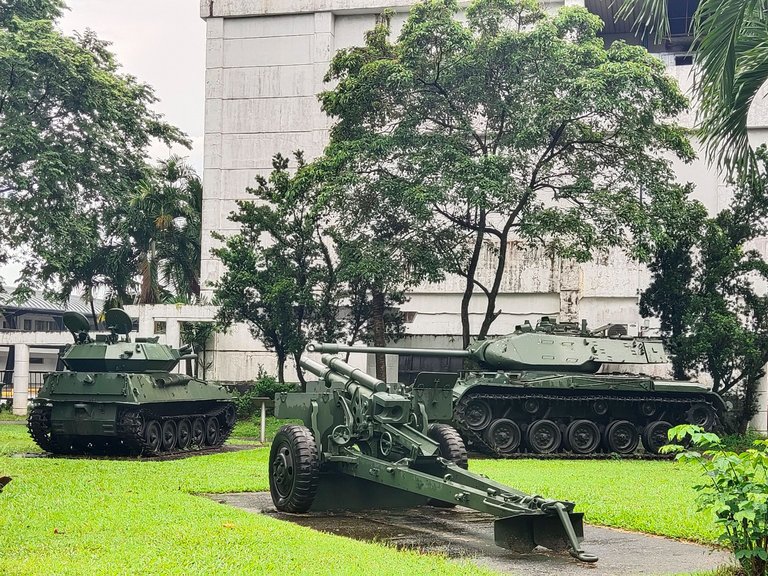
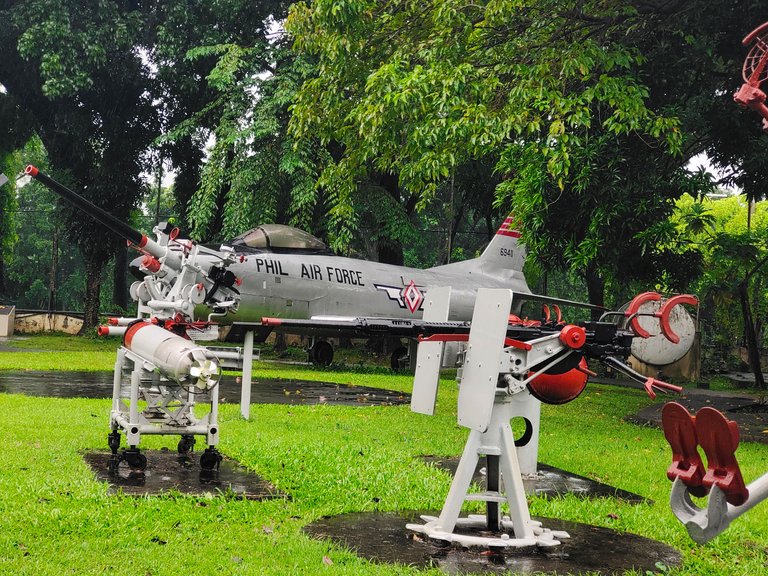
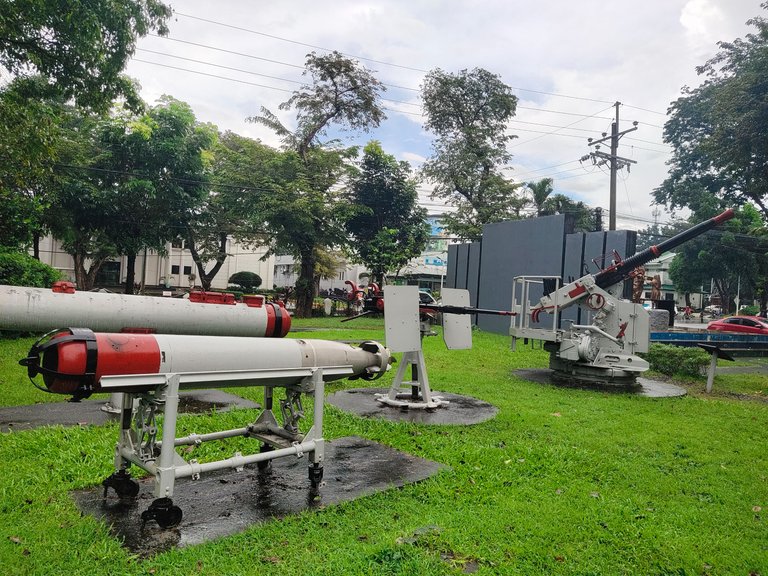
From its information label, this is US M2 40mm Anti-Aircraft Artillery or Twin Gun. This is the most significant light anti-aircraft gun used in WWII and fires a two-pound projectile that explodes on contact. I couldn't believe I was seeing it before my eyes, which I had only seen on television before.
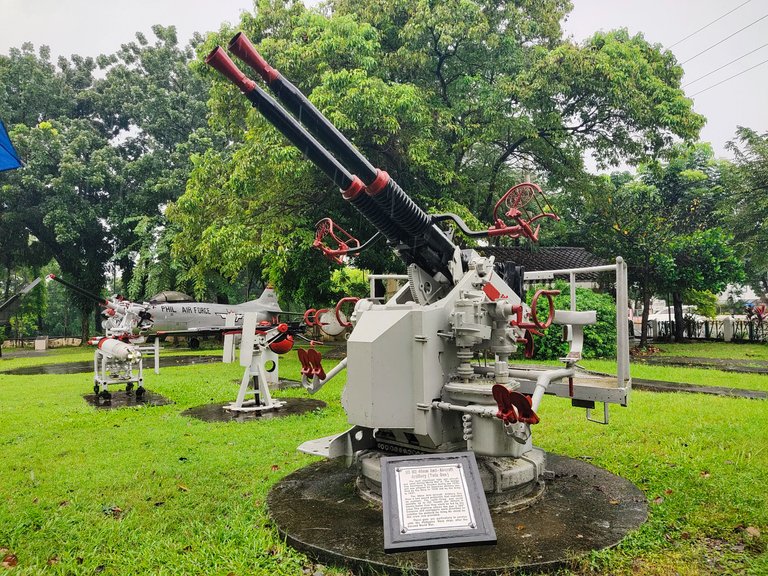
My mom posing with the weapons. She must do the honor because her husband was a hero. She looked stunned as well upon seeing the seemingly battlefield yard of the museum.
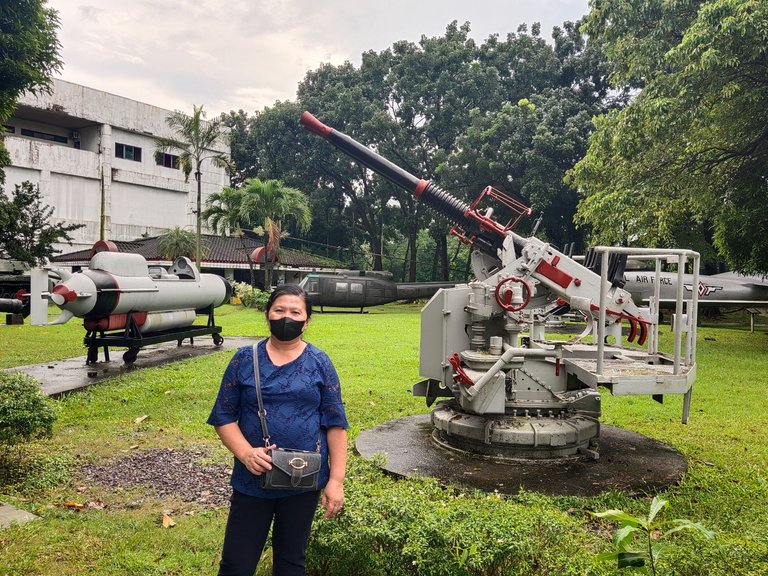
Can you guess what this is? I initially thought it was a missile (but it doesn't look exactly like one). Upon searching its image on Google, it's called Philippine Navy Midget Submarine. Now I wonder how the crew could operate this small submarine without being drawn, lol. It doesn't seem to have a cover. There are other navy weapons on display, such as torpedoes, which you can see in previous photos. Just look for cigar-shaped missiles. Torpedoes are fired by submarines.
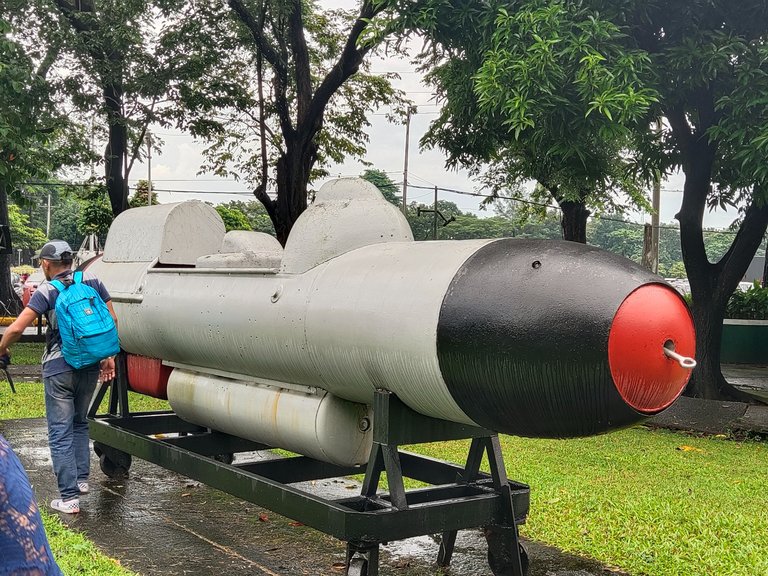
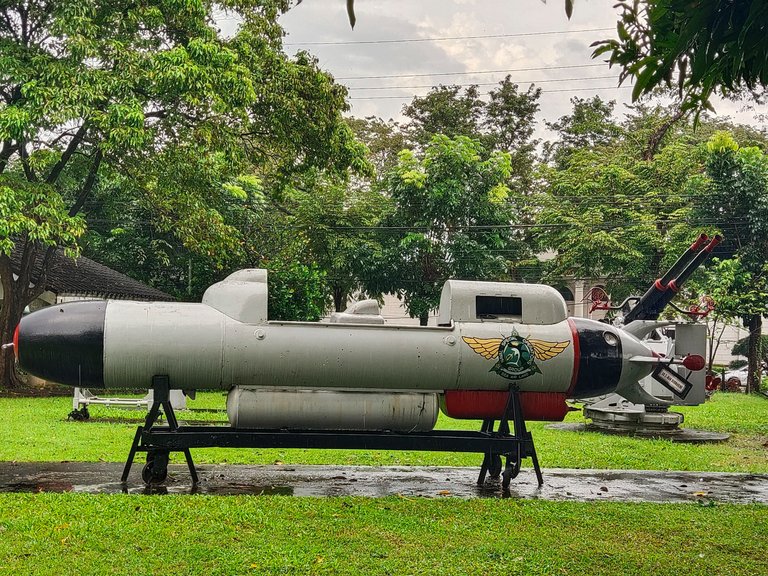
This cannon looks too old, and its label proved it. This 19th-century cannon of the Spanish Armada was cast in Seville Spain. It was used in the defense of the Philippine colony against foreign aggression. Among all military weapons, cannons are only those I've seen up close several times.

There are more types of cannons on exhibit.
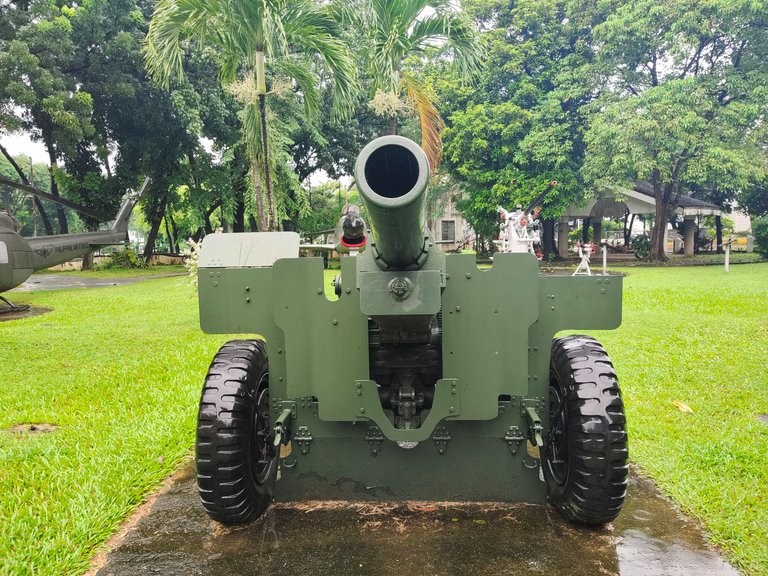 | 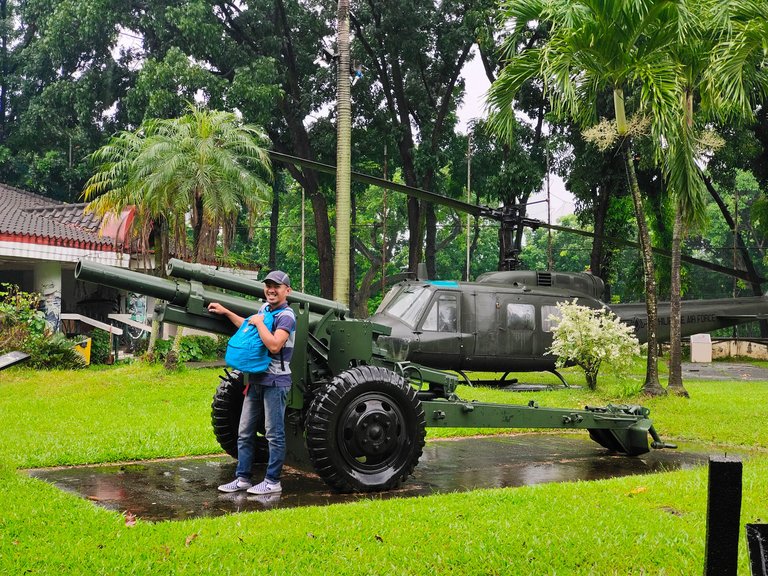 |
|---|
When I was a kid, I wished to ride on a military helicopter. That was after seeing my father climb down from the helicopter when his team brought him home. Seeing the chopper brought those memories back.
Below are Philippine Air Force air vehicles. The plane is North American F86D Sabre, while the chopper is Bell UH-1 Iroquois.
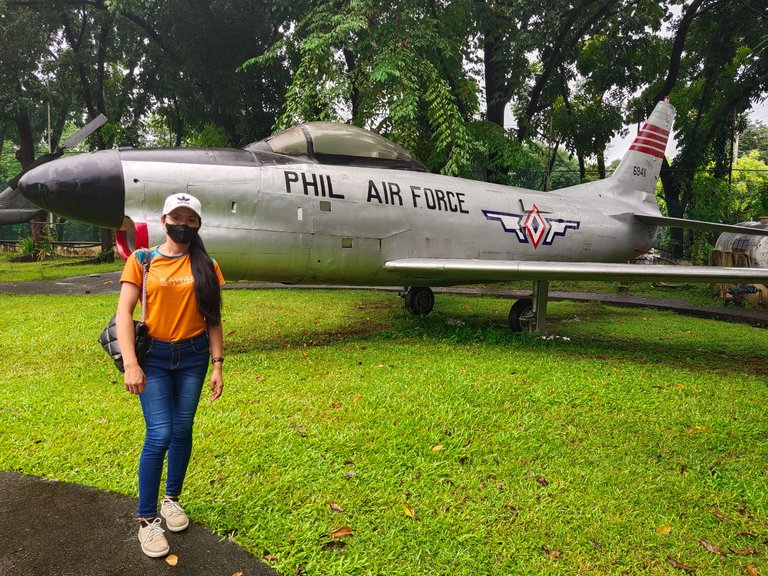
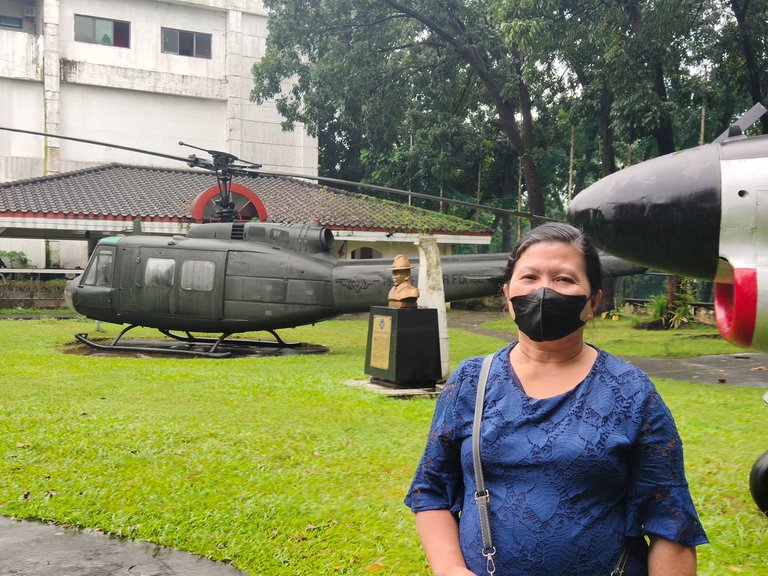
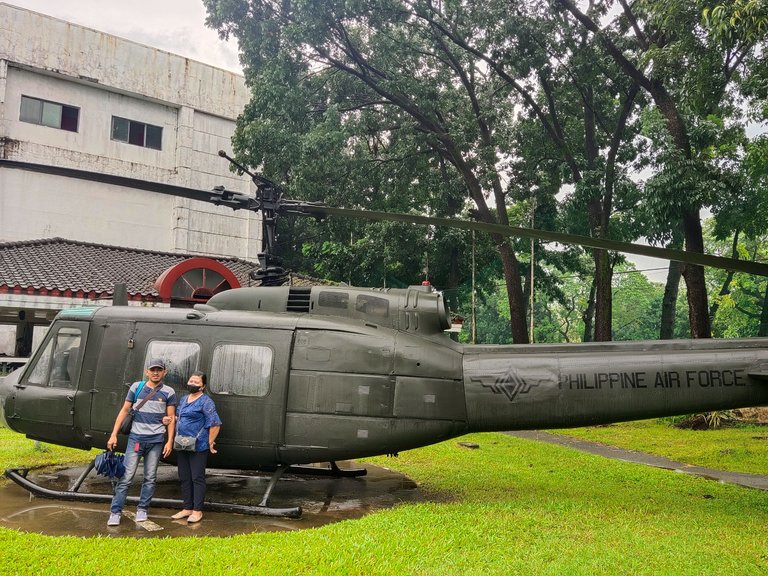
Huge military tanks are amazing to see up close. These are the Scorpion Tank and M41 Walker Bulldog. However, I feel suffocated looking at them. I can't imagine how people breathe inside the tank. Of course, there's oxygen, but it must be hard.
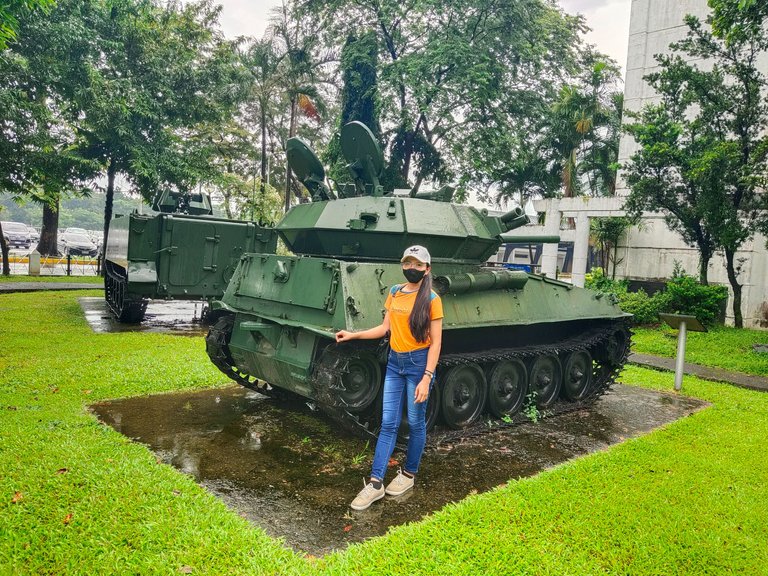
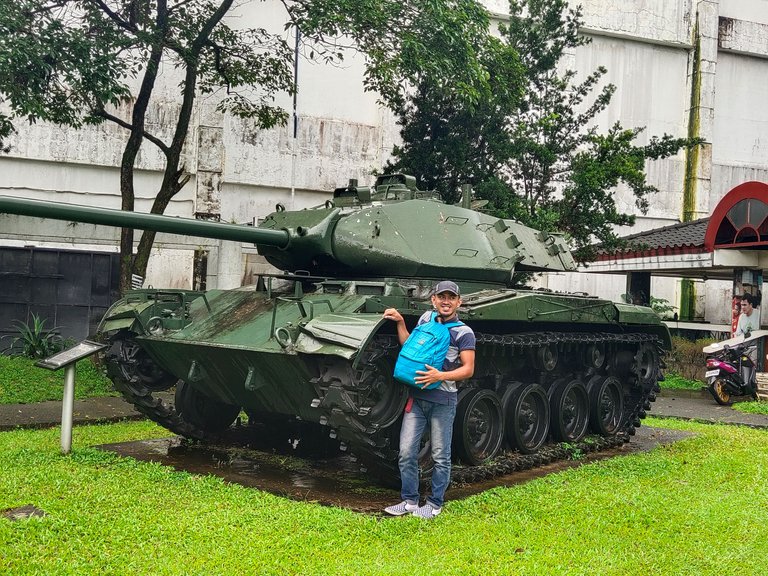
Lastly, the bust statue of Major Porfirio Zablan is also on display. He is significant in Philippine Air Force history. He was supposedly the first PCAC Commanding Officer, but he died during his advanced flying training.
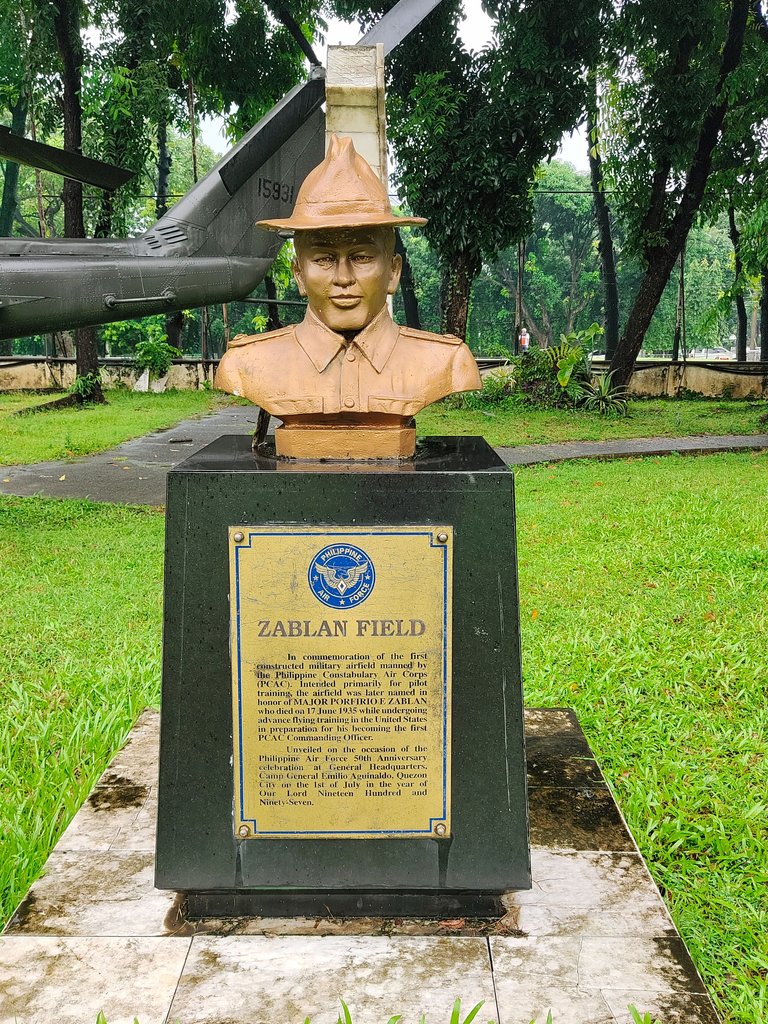
I was actually more interested in visiting the inside part of the 2-story museum because of the displays about Philippine heroes, former revolutionists, medals of valor, and interesting collections of historical military-related relics. The museum's exhibitions also include marine and navy displays, military uniforms, and equipment such as infantry guns, mortars, and others dating back to World War II and the older era. I might visit this again if given a chance someday. Nonetheless, it was an amazing experience at AFP Museum which brought back memories of my late father.
(All photos are mine)


Join her on her quest for self-discovery and wanderlust. If you like her content, don't hesitate to upvote, drop a comment, reblog, and follow for more wonderful adventures. |
|---|
You can also reach me on my socials and let's be connected:




